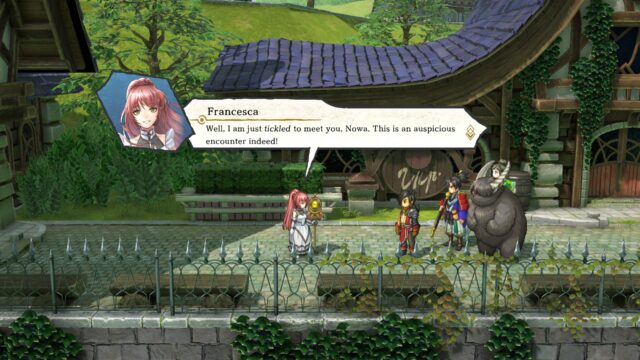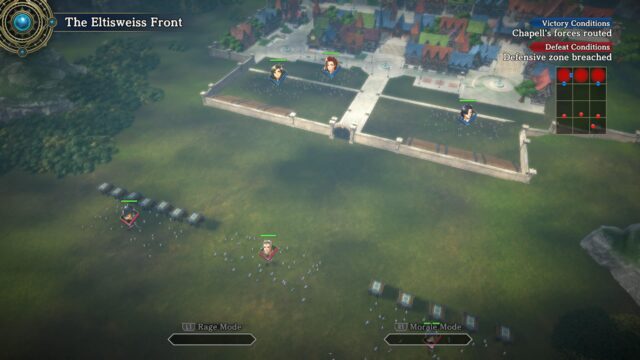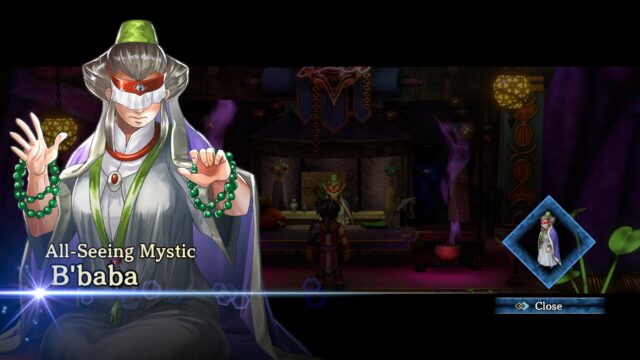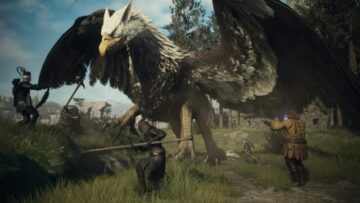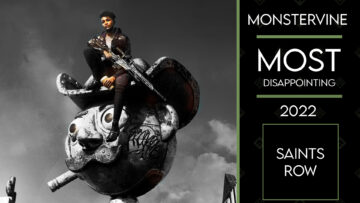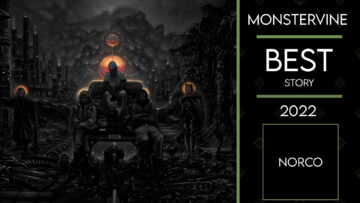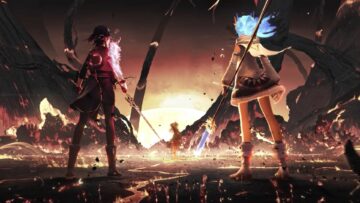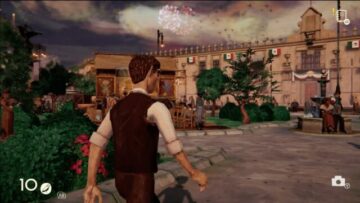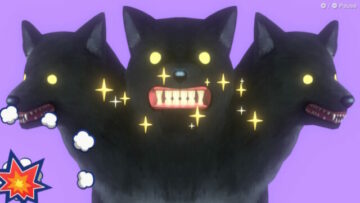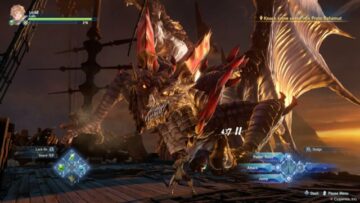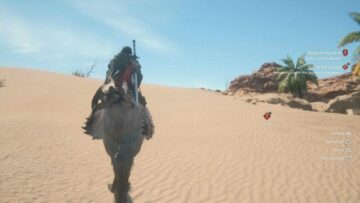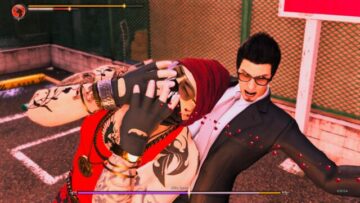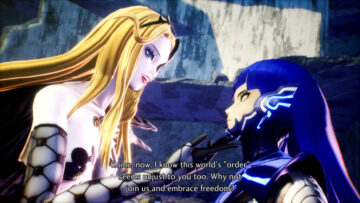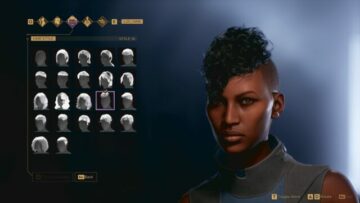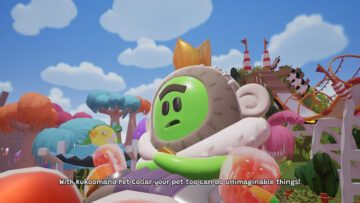I think it was around the first couple of story beats in the city of Hishan, built on the coast and made of walkways and bridges, that I realized how long it’s been since I’ve played a game with much political intrigue. I’m not just old man cloud yelling either, large-scale RPGs have been transitioning away from the straight medieval setting for a while now, and for the better. Variety is the spice of life, games transitioning away from the norm is a good thing. Frankly, I didn’t have much faith in Eiyuden Chronicle: Hundred Heroes because of the production team’s grandstanding about this being a return to form. Whenever I hear a studio talk about how a game is a “return to form” or “tribute to” it makes me uneasy. So when Rabbit & Bear boasted those exact things, it deflated my interest in Hundred Heroes quite a bit. That was until I got to the end of the second chapter last week.
Please note, I have not had time to finish Eiyuden Chronicle: Hundred Heroes so this is a review in progress.
Eiyuden Chronicle: Hundred Heroes
Developer: Rabbit & Bear Studios
Price: $49.99
Platform: Playstation 4/5 (Reviewed), Xbox Series X|S, Nintendo Switch, PC
MonsterVine was supplied with PS5 code for review
As someone who grew up playing RPGs in the 90s, games that looked and played similar to Eiyuden Chronicle: Hundred Heroes, there was a lot of nostalgia attached to my experience. While that’d normally work against a game, Hundred Heroes manages to embrace modern design while not abandoning its roots. The setup for the story almost seems like the punchline for a joke about 90s RPGs. There’s an evil empire planning on taking over the world and guess what? You’re on the other team! Fret not though, with the 120 allies you can recruit along the way you’ll overcome the odds and best them to save the world! I’d be ripping this story to shreds if it didn’t handle the content so well.
Nowa, our protagonist, joins up with the Watch, a local authority sent to take care of goings-on around the region. Immediately we’re thrown into a group with Seign and Hildi, two imperials, the group makes their way to a runebarrows where they discover a rune lens and hand it over to the empire. Lady Perrielle, the newish leader to the Grum region, asserts herself when meeting with the empire, and our antagonist, Dux Allric, takes this personally. The empire invades, and we’re thrown into our first strategic battle, something that I hated in the first Suikoden game, which Hundred Heroes takes inspiration from.
There are a few ways battles take place in Hundred Heroes, but it’s primarily a turn-based JRPG that’s more Dragon Quest than Final Fantasy. A turn order is shown at the top of the screen and your actions might jumble that up but, for the most part, you’re just taking turns whacking each other. During boss fights and other unusual circumstances, Hundred Heroes employs something called a gimmick, where your attack function can also double over as performing an action. I brought this up in my preview write-up for the game and was unimpressed and while I see the implementation as making more sense in the full game, I’m still not thrilled with it. Battles are row-based, where each team is given a front row and a back row and each character has a weapon range. Short range weapons can only hit the row in front of them, medium range can hit two rows in front of them, and long range can hit everything. Hundred Heroes allows bringing six people into battle and I have thoughts on that but we’ll talk about that later.
Once the Dux attacks we’re given a view on the other side of battle, the strategic side. You’re thrown into a 5×5 grid. Once there, your commander’s faces will be shown on tokens and you’ll be moving them around the grid, one or two spaces at a time, waging war against your enemy. Your options during the prep phase are to Move, Change Facing, and Legion Command. Legion Command is based on the commander’s abilities and allows you to do things like raise your archer’s attack for the next fight or heal allies that share the same space as you. You also have two bars along the bottom, a rage mode, and a morale mode. Rage mode fills up when your troops die and, when activated, increases their attack for one turn. Morale mode fills up when your troops deal damage and won’t let the enemy retreat for one turn when activated.
Eventually, and this is the really really fun part, you’re charged with leading the resistance movement and y’all build a castle. Town-building in RPGs, when done right, is peak gameplay experience for me. I’m interested in developing, be it developing characters or developing towns, I’m interested in visible progress. The amount of things you can build and upgrade in your castle is phenomenal. When you talk to the planner and look at the blueprints the amount of nodes that show up makes it look like the sphere grid from Final Fantasy X after a while. There are a lot of upgrade nodes but not a small number of nodes requiring allies to be recruited before they can be unlocked. Eiyuden Chronicle: Hundred Heroes feels very cohesive in its design, with lots of interworking parts that boil down to whether or not you’ve recruited the correct allies.
I spent a lot of time trying to figure out how to recruit certain people. Eiyuden Chronicle: Hundred Heroes tries to be at least a little vague with some of the recruits offering a puzzle to solve. Conversely, many of the heroes will just join up with you by talking to them, a weak point in the storytelling. While I don’t hate the idea of people knowing about the alliance and wanting to join them, it feels a bit hollow from a gameplay perspective when people are a little too excited to join. Paquia shows up in Arenside, the city where you first teamed up with the empire when Nowa joined the Watch. She loves a creature known as Eggfoots, which you’ve fought several times at this point. She’s requesting five eggs to set up an Eggfoot racing track in your castle. It’s quite a grind to get these eggs if you don’t already have them, Eggfoots are not super forthcoming with their spawn and furthermore, two types of eggs drop and she only wants one of them. Give her five eggs and she comes aboard, it feels earned, I can race and breed Eggfoots now. I can’t even remember a few of the character’s names that just joined up out of the blue like Jimbo Jones in The Simpsons asking if he can join Homer’s drunken posse.
Once recruited, Hundred Heroes has minigames abound. Currently in my castle, Pandaemonium, you can collect cards and battle every single recruit in a card battle game, race and breed eggfoots, challenge people to beigoma, fish, cook, and participate in mock battles. I’m just assuming based on how upgraded my castle is that there’s more I’m missing. Eiyuden Chronicle: Hundred Heroes is a big game. And I’m not going to say I wasted any time playing it, but at forty hours in I feel like I’m finally just digging into it. And that’s not even discussing how many dungeons and villages there are in this game, it’s positively huge. Imagine, without a guide, going back and visiting difficult dungeons you’ve already completed solely to find an ally you may have missed. Luckily, there’s a fortune teller you can recruit that will give you hints on the whereabouts of your potential allies, but again, Hundred Heroes likes to play it close to the vest. Don’t expect her to spell it out for you.
I have a few issues with Eiyuden Chronicle: Hundred Heroes but they do exist. I spoke about how easy it is to recruit some and that’s likely just the business of the Chrono Cross problem of having so many characters. And it IS a problem, many of the characters are just guys you find, even if they have specific jobs they’re not heroes of old or iconic figures. I think Hundred Heroes deals with this by scaling experience from battles because anyone I brought with me behind in levels managed to catch up quickly. Another issue of note is the loading times. While not long, the loading times exist in strange places including going into rooms in an inn or going in and out of battle. Running a digital copy of the game on a PS5, I feel like loading times should be almost non-existent, but they’re there and they’re a little annoying.
Eiyuden Chronicle: Hundred Heroes takes a bit to sink its teeth into you, and you, it. Initially, I was a little put off from the game and felt kinda bored. But every single step delving further into Hundred Heroes made me love it even more. The sense of progression in Eiyuden Chronicle: Hundred Heroes is wonderful and managed to recapture a feeling I haven’t had in a while.
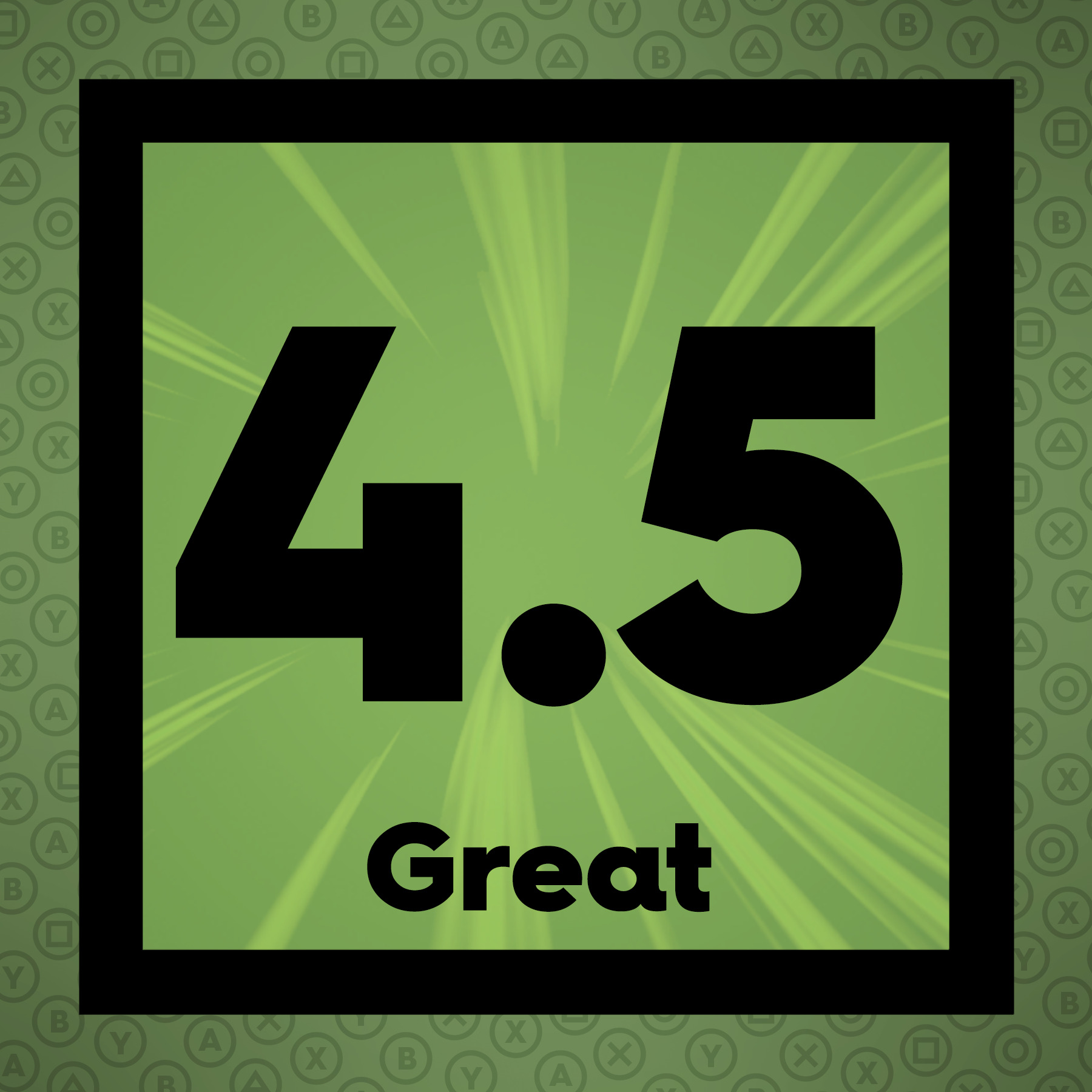 The Final Word
The Final Word
To say I’m surprised by how much I’ve been enjoying Hundred Heroes is an understatement. Truly, I cannot wait to not only finish this game. I’m also really hoping the passing of the great Yoshitaka Murayama doesn’t slow Rabbit & Bear Studios down because I would really love to see more RPGs in this vein.
– MonsterVine Rating: 4.5 out of 5 – Great
- SEO Powered Content & PR Distribution. Get Amplified Today.
- PlatoData.Network Vertical Generative Ai. Empower Yourself. Access Here.
- PlatoAiStream. Web3 Intelligence. Knowledge Amplified. Access Here.
- PlatoESG. Carbon, CleanTech, Energy, Environment, Solar, Waste Management. Access Here.
- PlatoHealth. Biotech and Clinical Trials Intelligence. Access Here.
- Source: https://monstervine.com/2024/04/eiyuden-chronicle-hundred-heroes-review/
- 120
- 125
- 360
- a
- abilities
- About
- Action
- actions
- after
- again
- Against
- Alliance
- allows
- almost
- along
- already
- also
- am
- amount
- an
- and
- Another
- any
- anyone
- ARE
- around
- as
- asking
- At
- attack
- attacks
- Authority
- away
- back
- bars
- based
- Battle
- battles
- BE
- bear
- beats
- because
- been
- before
- behind
- being
- BEST
- Better
- BIG
- Bit
- Blue
- bored
- bottom
- bridges
- bringing
- brought
- build
- built
- business
- but
- by
- called
- CAN
- card
- Cards
- care
- Catch
- certain
- challenge
- change
- chapter
- character
- characters
- charged
- circumstances
- City
- close
- Cloud
- code
- cohesive
- collect
- comes
- command
- completed
- content
- conversely
- copy
- correct
- Couple
- currently
- damage
- deal
- Deals
- delving
- Design
- developing
- die
- difficult
- digital
- discover
- discussing
- do
- done
- double
- down
- Drop
- dungeons
- During
- each
- earned
- easy
- Eggs
- either
- Eiyuden Chronicle: Hundred Heroes
- embrace
- empire
- encounter
- end
- enjoying
- even
- Every
- everything
- Evil Empire
- excited
- exist
- expect
- experience
- faces
- facing
- faith
- FANTASY
- feel
- feels
- felt
- few
- fight
- fights
- Figure
- figures
- fills
- Final
- Final Fantasy
- Finally
- find
- finish
- First
- fish
- five
- For
- form
- forthcoming
- Fortune
- forty
- from
- front
- full
- fun
- function
- further
- furthermore
- game
- gameplay
- Games
- Gaming
- Get
- give
- given
- going
- good
- got
- great
- grew
- Grid
- Group
- guess
- guide
- had
- hand
- handle
- has
- hate
- Have
- having
- he
- hear
- her
- heroes
- hints
- HIT
- holding
- hoping
- hours
- How
- How To
- HTTPS
- huge
- hundred
- i
- iconic
- idea
- if
- imagine
- immediately
- implementation
- in
- Including
- increases
- initially
- Inspiration
- interest
- interested
- into
- Is
- issue
- issues
- IT
- ITS
- Jobs
- join
- joined
- joining
- Joins
- joke
- jones
- jpg
- JRPG
- just
- knowing
- known
- lady
- large-scale
- last
- later
- leader
- leading
- least
- Lens
- let
- levels
- Life
- like
- likely
- likes
- Little
- loading
- local
- Long
- Look
- looked
- lot
- lots
- love
- loves
- made
- MAKES
- Making
- man
- managed
- many
- May
- me
- Medieval
- medium
- meet
- Meeting
- might
- missed
- missing
- mode
- Modern
- more
- most
- move
- movement
- moving
- much
- my
- names
- Next
- Nintendo
- Nintendo Switch
- nodes
- normally
- Nostalgia
- not
- note
- now
- number
- Odds
- of
- off
- offering
- Old
- on
- once
- One
- only
- Options
- or
- order
- Other
- our
- out
- over
- overcome
- part
- participate
- parts
- passing
- peak
- People
- performing
- personally
- perspective
- phase
- place
- places
- planning
- plato
- plato data intelligence
- platodata
- platogaming
- play
- played
- Playing
- playstation
- Point
- political
- positively
- potential
- primarily
- Problem
- Production
- Progress
- progression
- protagonist
- ps5
- put
- Puzzle
- quest
- quickly
- quite
- Rabbit
- Race
- racing
- raise
- range
- Rating
- realized
- really
- recruit
- region
- Remember
- requesting
- resistance
- Retreat
- return
- review
- reviewed
- right
- Rooms
- roots
- RPGs
- running
- s
- same
- save
- say
- saying
- scaling
- Screen
- second
- see
- seems
- sense
- sent
- Series
- set
- setting
- setup
- several
- Share
- she
- Short
- should
- show
- showing
- shown
- shows
- side
- similar
- since
- single
- SIX
- slow
- small
- So
- solely
- SOLVE
- some
- someone
- something
- Space
- spaces
- Spawn
- specific
- spell
- spent
- sphere
- spice
- staff
- step
- still
- Story
- storytelling
- straight
- strange
- Strategic
- studio
- Suikoden
- super
- Switch
- Take
- takes
- taking
- talk
- talking
- Team
- teamed
- that
- The
- The Game
- The Simpsons
- the world
- their
- Them
- there
- These
- they
- thing
- things
- think
- this
- those
- though
- thrilled
- time
- times
- to
- Tokens
- too
- top
- track
- transitioning
- truly
- trying
- turn
- turns
- two
- types
- ui
- unlocked
- until
- unusual
- up
- upgrade
- upgraded
- variety
- very
- Video
- View
- wait
- wanting
- wants
- war
- was
- wasted
- Watch
- way
- ways
- weapons
- week
- well
- What
- when
- whenever
- where
- whether
- while
- white
- WHO
- will
- with
- without
- Work
- world
- would
- X
- xbox
- xbox series
- Xbox Series X|S
- you
- your
- zephyrnet
